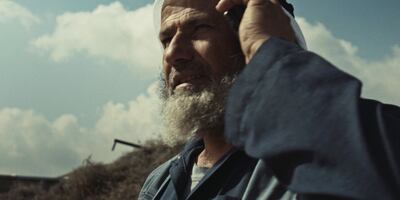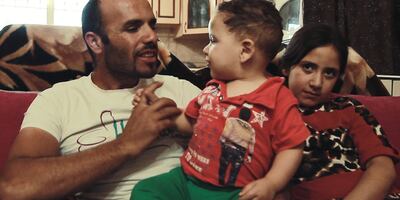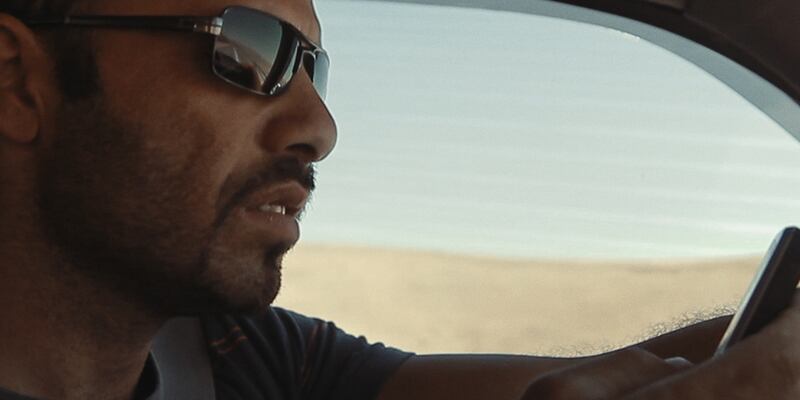Bedouin cousins play white-knuckle games of cat and mouse with Israeli authorities, smuggling undocumented Palestinian labourers through a small gap in the border wall between Israel and the Palestinian territories in the documentary The Devil’s Drivers.
Part thriller, part portrait of resilience, the Arabic-language film was shot over eight years and has its public world premiere at the Toronto International Film Festival on Wednesday.
Filmmakers Mohammed Abugeth, 35, and Daniel Carsenty, 39, say that their interest is in focusing on the humanity of their subjects, who are seen both as risk-takers and devoted family men.
The documentary shows the reality of the West Bank, where there’s little work. Single men, who are seen as a security threat, can’t get labour permits to cross the border into Israel. There are plenty of construction jobs across the border, but if they’re caught trying to sneak through, everyone in the car faces arrest.
There are harrowing scenes as drivers elude detection with snap decisions behind the wheel, cloaking their cars in dust clouds as they race across the South Hebron desert.

The film focuses on Hamouda, a driver who was caught smuggling workers and imprisoned. Now back home and still driving, he is still tormented about missing the birth of his son while he was in jail. His cousin Ismail vows to give up the risky driving jobs until financial pressure forces him to step back in, with tragic results.
Abugeth and Carsenty are in Toronto for the premiere of their film in the Tiff Docs programme. It was shown to an audience of international press and industry on Monday and will screen to public audiences via Tiff’s digital platform until Friday.
Carsenty and journalist Abugeth met by chance at a coffee machine at a Berlin film school in 2011. Carsenty had already shot a film in Palestine, After Spring Comes Fall. The pair started work on The Devil’s Drivers in 2012.
Using small, hand-held cameras, the two filmed from the passenger seat of the smugglers’ cars, ending up with 130 hours of footage. It was risky work for them, too. They didn’t wear body armour or helmets. Occasionally, drivers bark at them to lower the camera or to not film soldiers.
Hamouda lives in the small town of Yatta, which hasn’t had running water in 12 years. Desperate to provide for his family, he turned to driving illegal workers when he couldn’t find a job. He agreed to participate in the film but wasn’t always interested in having a ride-along. There was one nervous, nine-day stretch where he ghosted the filmmakers and refused to take their calls.
The drivers and the local informants they use to help keep tabs on the authorities’ movements “do the dirty work”, Carsenty says.
“These drivers are in the way the hinge connecting two very different economies and they’re doing their work in the dark, in the shadows,” says Carsenty. “They are very hidden, faceless and think the film’s title reflects very, very strongly: the forbidden, dangerous nature of their occupation.”
It also reflects what Carsenty calls the “Faustian bargain” Hamouda and Ismail make in the hope of better lives each time they get behind the wheel.
“Our characters are constantly navigating these dilemmas of circumstances. Should I take this risk, or should I take that risk?” says Carsenty. “And I think that's also what attracted us to this topic as filmmakers. I think that’s also what keeps the audience so strongly engaged. I think this film constantly forces people to think what would I decide in that moment?”
Abugeth says they wanted to show Hamouda and Ismail outside their cars to build a compelling narrative. We watch their children grow up over the eight years of filming. Babies are born. The drivers age.

In one scene, the drivers decide to pull back on a trip to wait for an all-clear underneath the only tree in the region, enjoying the shade and a rare peaceful moment.
Hamouda is stoic. “I accept my fate,” he says, although it’s clear the uncertainty torments him.
The nearly decade-long process of finishing The Devil’s Drivers had its challenges, the filmmakers say. They approached making it like a start-up business, Carsenty says, filming when they could afford to, raising funds to keep going and pulling back to do other work to keep the project afloat.
It’s paid off with a world premiere slot at one of the world’s most respected and influential film festivals.
As independent filmmakers, they hope the documentary is picked up by a distributor at Tiff. They’d also like to see it on screen in Israel.
Abugeth says while one film, or a thousand, can’t bring change, “I still have hope that ... if both sides saw it and everyone saw it, then maybe it changes something”.





